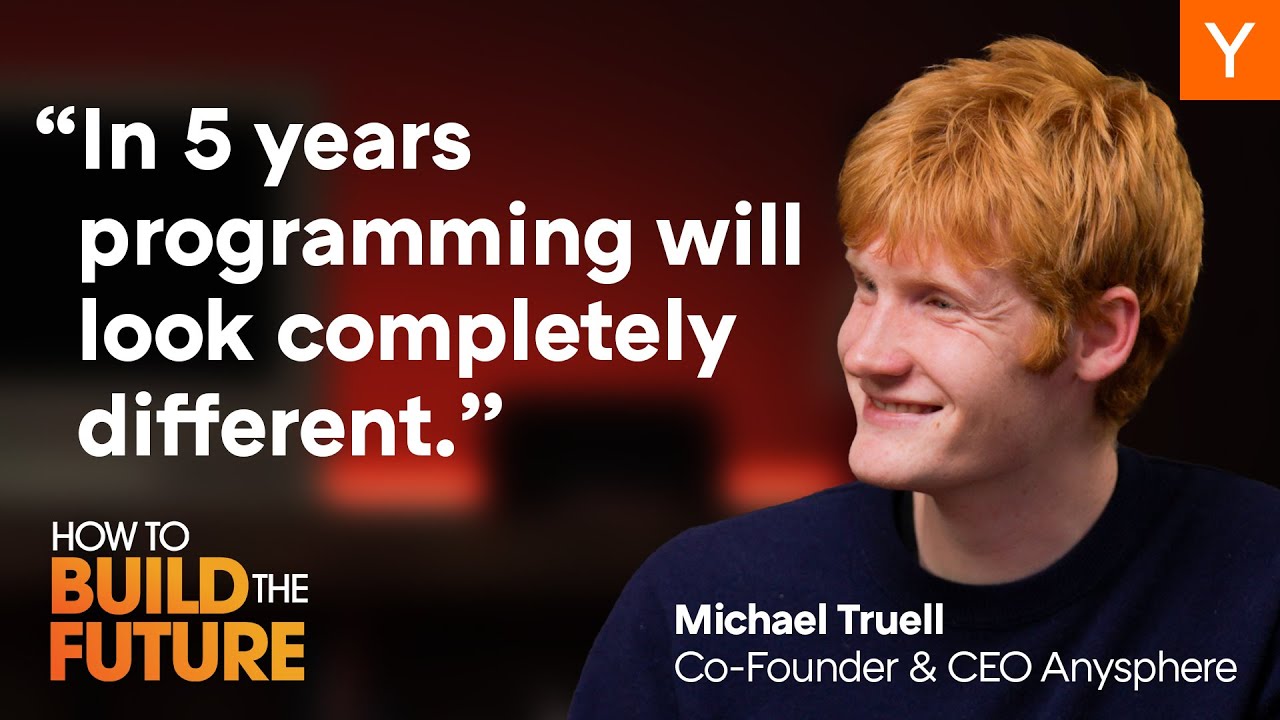Lessons from Cursor's $9 B Journey - AI's first PMF
Garry Tan from Y Combinator interviews Michael Truell, Cursor's CEO.
Below is a breakdown of the latest How to Build the Future episode, where Garry Tan interviews Michael Truell, co‑founder & CEO of Cursor (the AI coding IDE). Read on for the key points, why they matter, and practical take‑aways for anyone building software or AI products today.

1. Cursor in a sentence
Cursor aims to replace hand‑written code with "describe‑and‑build" workflows. Users already let the AI write 40–50 % of their committed lines; the north star is 100 %.
2. Why this interview matters
- Fastest‑growing dev tool in years – Cursor hit $100 M ARR in 20 months and is now valued at $9 B.
- Unique data moat – Millions of model calls each day reveal what code gets accepted, tweaked, or rejected.
- A preview of tomorrow's IDE – Truell explains why they shipped a stand‑alone editor instead of a plug‑in (more on that in §6).
3. From autocomplete to "auto-everything"
| Phase | What AI does | What humans do |
|---|---|---|
| Today | Completes lines & answers questions (the 'tap' form‑factor) | Reads every diff |
| Next 12 mo | Takes small tickets end‑to‑end (the 'agent' form‑factor) | Reviews & merges |
| 5+ yrs | Owns whole features & self‑improves | Sets product intent, taste, ethics |
Cursor tracks paid power users — devs who rely on the AI 4–5 days a week — as its North Star metric.
4. Two real bottlenecks Truell calls out
- Context windows – Mature SaaS codebases can top 100 M tokens; even million‑token models struggle.
- Continual learning – Agents need fresh tests, feature flags, and design tweaks hourly, not via occasional fine‑tunes.
Cursor is wiring runtime logs, design files, and chat threads straight into the model's feedback loop to tackle both.
5. Why "taste" still wins
Perfect code generation can't decide what feels right—layout nudges, UX pacing, or subtle logic. Tomorrow's engineer is a "logic designer."
6. Business lessons worth copying
| Choice Cursor made | Why it paid off |
|---|---|
| Built a stand‑alone editor, not just an extension | Allowed deep UI changes as AI progressed; avoided VS Code bottlenecks. |
| Measured paid power users, not DAU | Forced focus on daily, professional value over flashy demos. |
| Hired painfully slowly for first 10 | High talent density acts as an 'immune system' against mediocre hires. |
| Ready to break the 50 % headcount rule | Model leaps every nine months demand equally fast org growth. |
Cursor still runs first‑round coding screens without AI tools; they'd rather train great engineers in AI than screen them out unfairly.
7. Action playbook for product teams
Here are a few things Cursor does, that you could copy too!
- Instrument everything. Capture every user action as labeled data.
- Write specs in plain English first. Let an agent draft code, then study the failure cases.
- Run "taste reviews." Pair code reviews with short sessions judging clarity, delight, and ethics.
- Plan for multimodal context. Pipe logs, screenshots, and Figma frames into one agent workspace.
- Onboard juniors as agent supervisors. Teach reasoning and prompt craft before deep syntax.
8. Founding story & mindset
- Pivot from CAD to code – The team's first project was a CAD co‑pilot. They shelved it when they realised code had orders‑of‑magnitude more data and clearer scaling laws.
- "Follow the line" mantra – They bet that language models would keep improving on a predictable curve and built for the capability ahead, not the one in hand.
- Year‑long "wilderness" – Cursor spent ~12 months iterating with tiny user numbers before the product finally clicked and growth took off.
9. Moats in the AI era
Truell argues that distribution is the data moat: the more real‑world edits your model sees, the faster it learns — just like Google Search in 1999.
Closing thought
Programming is shifting from typing to directing. Cursor shows that the winners won't bolt models onto old tools; they'll rethink the tool itself and double‑down on the one thing machines still lack: human judgment.